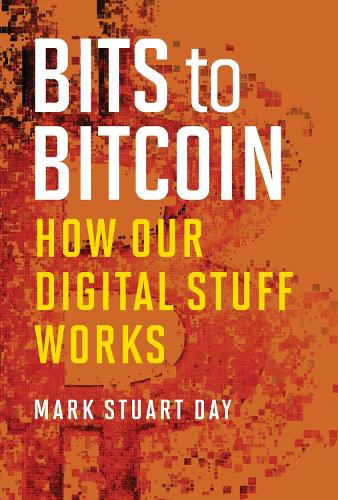
Bits to Bitcoin: How Our Digital Stuff Works
(Paperback)
Publishing Details
Bits to Bitcoin: How Our Digital Stuff Works
By (Author) Mark Stuart Day
Illustrated by C.A. Jennings
MIT Press Ltd
MIT Press
6th February 2024
United States
Classifications
General
Non Fiction
Other technologies and applied sciences
004
Physical Properties
Paperback
368
Width 152mm, Height 229mm
369g
Description
Most of us feel at home in front of a computer; we own smartphones, tablets, and laptops; we look things up online and check social media to see what our friends are doing. But we may be a bit fuzzy about how any of this really works. In Bits to Bitcoin, Mark Stuart Day offers an accessible guide to our digital infrastructure, explaining the basics of operating systems, networks, security, and related topics for the general reader. He takes the reader from a single process to multiple processes that interact with each other; he explores processes that fail and processes that overcome failures; and he examines processes that attack each other or defend themselves against attacks. Day tells us that steps are digital but ramps are analog; that computation is about "doing something with stuff" and that both the "stuff" and the "doing" can be digital. He explains timesharing, deadlock, and thrashing; virtual memory and virtual machines; packets and networks; resources and servers; secret keys and public keys; Moore's law and Thompson's hack. He describes how building in redundancy guards against failure and how endpoints communicate across the Internet. He explains why programs crash or have other bugs, why they are attacked by viruses, and why those problems are hard to fix. Finally, after examining secrets, trust, and cheating, he explains the mechanisms that allow the Bitcoin system to record money transfers accurately while fending off attacks. An accessible guide to our digital infrastructure, explaining the basics of operating systems, networks, security, and other topics for the general reader. Most of us feel at home in front of a computer; we own smartphones, tablets, and laptops; we look things up online and check social media to see what our friends are doing. But we may be a bit fuzzy about how any of this really works. In Bits to Bitcoin, Mark Stuart Day offers an accessible guide to our digital infrastructure, explaining the basics of operating systems, networks, security, and related topics for the general reader. He takes the reader from a single process to multiple processes that interact with each other; he explores processes that fail and processes that overcome failures; and he examines processes that attack each other or defend themselves against attacks. Day tells us that steps are digital but ramps are analog; that computation is about "doing something with stuff" and that both the "stuff" and the "doing" can be digital. He explains timesharing, deadlock, and thrashing; virtual memory and virtual machines; packets and networks; resources and servers; secret keys and public keys; Moore's law and Thompson's hack. He describes how building in redundancy guards against failure and how endpoints communicate across the Internet. He explains why programs crash or have other bugs, why they are attacked by viruses, and why those problems are hard to fix. Finally, after examining secrets, trust, and cheating, he explains the mechanisms that allow the Bitcoin system to record money transfers accurately while fending off attacks.
Author Bio
Mark Stuart Day was Chief Scientist at Riverbed Technology for a decade and is currently Visiting Lecturer at MIT. With more than thirty patented inventions, he has also made technical contributions at Dropbox, IBM, Cisco, Digital, and BBN.
